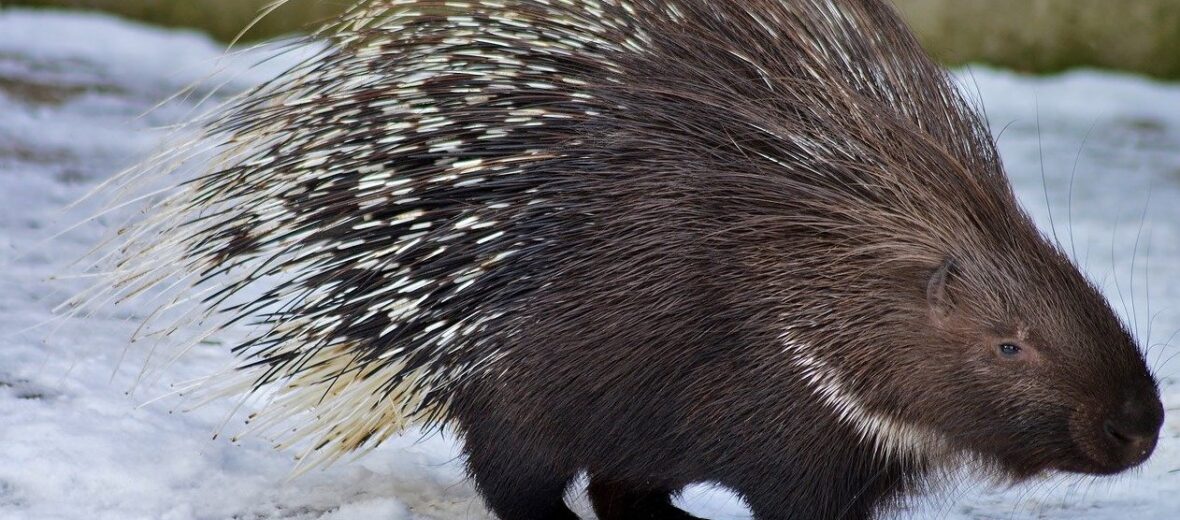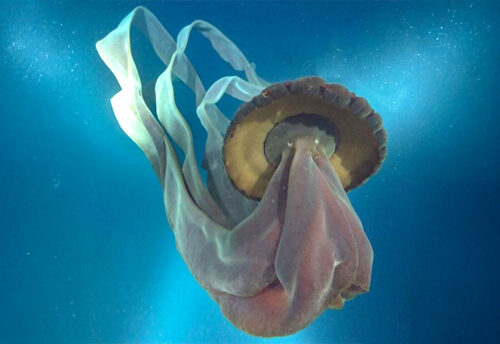
The porcupine is a large, slow-moving rodent with very sharp quills on their backs. They are found on every continent except Antarctica. They are grouped into two groups: The first group is the Old World porcupines, which are found in Europe, Africa, and Asia. The second group is the New World porcupines. These are found in North, Central, and South America. The North American porcupine is the only species found in the U.S. and Canada.
First the Stats…
Scientific name: Erethizon dorsatum
Weight: Up to 35 lbs.
Length: Up to 26 inches, plus a 10 inch tail
Lifespan: Up to 18 years
Now on to the Facts!
1.) Porcupines shake their quills, which makes them rattle, as a warning to would-be predators. If that doesn’t work, they charge backwards into the predator.
2.) Some porcupine quills can get up to a foot long, like those on the Africa’s crested porcupine.
3.) New world porcupines are arboreal (they spend all or part of their time in trees) but old world porcupines are terrestrial (they spend their time on the ground).
4.) Porcupines are nocturnal (active at night) mammals that forage for food in the evening hours.
5.) Porcupine vision is poor, but they have an excellent sense of smell.
But wait, there’s more on the porcupine!
6.) Porcupines are the third largest rodents in the world, and the second largest in North America! The second-place winner is the beaver, and the first-place is the capybara.
7.) Porcupines are herbivores. This means they eat mostly vegetation. They will, occasionally, chew on bones to wear down and sharped their teeth. They have also been observed eating bugs and small lizards.
8.) Female porcupines carry their young for a period of up to 31 weeks, depending on the species, and give birth to 1 – 3 babies at a time. Baby porcupines are called porcupettes. How cute is that?
Did you know…?
Some of these prickly critters have prehensile (gripping) tails to aid in climbing?
9.) Contrary to popular belief, a porcupine cannot throw it’s quills. They just become dislodged when they quill a predator.
10.) A porcupine has approximately 30,000 quills on its body!
But wait, there’s still more on the porcupine!
11.) Each one of a porcupine’s quills has a topical antibiotic, so a porcupine attack will not usually lead to an infection. This is, however, a defense mechanism to prevent accidental self-quilling.
12.) Porcupine quills have overlapping barbs on the tips. This makes them hard to remove, if you’re unlucky enough to get quilled (stabbed).
13.) Baby porcupines have soft quills at birth, which harden within a few days. Because I’m sure you were wondering how the heck mom gives birth to a living pin cushion.
14.) During the mating ritual, there is a vicious fight which includes urinating on the female. The reason for the urination is so the female knows to move her quill-filled tail aside for a jab-free reproduction.
Now a Short Porcupine Video!
Also, check out the Critter Science YouTube channel. Videos added frequently!
Want to suggest a critter for me to write about? Let me know here.




Leave a Reply